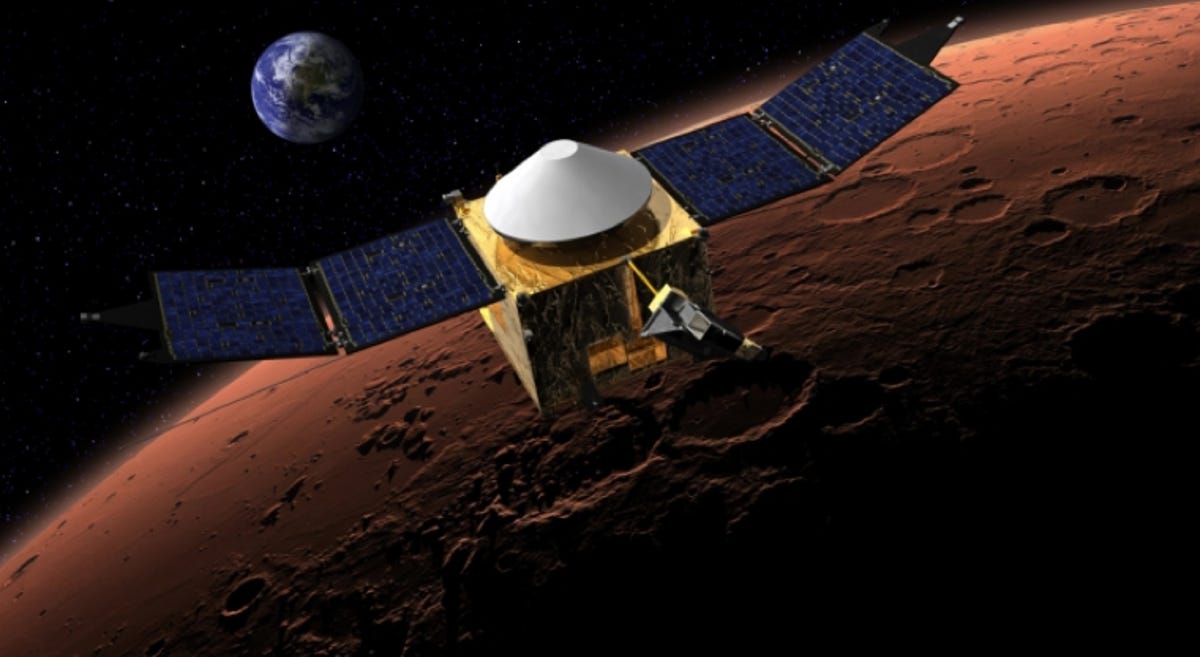Will MAVEN unravel a Martian mystery? (pictures)
Scientists hope the newest NASA probe will help explain why the Red Planet lost most of its atmosphere.

MAVEN to Mars: Start the countdown
Editors' note: This slideshow was originally published November 16 at 11:03 p.m. PT. It has been updated with additional photos and details from the launch on November 18.
MAVEN in orbit
By the numbers
Length: 37.5 feet (11.4 meters)
Spacecraft Dry Mass: 1,991 pounds
Wet (Fueled) Mass at Launch: 5,622 pounds
Power: 1135 watts (when Mars is farthest from the Sun)
NASA preparation
Atop an Atlas V
Finishing touches
Out the door
Heading to the launch pad
Upright and ready to go
Deep Space Network tests
Spin test
Solar arrays
Here, MAVEN's twin solar arrays get checked out.
After the spacecraft slips into Mars orbit about 10 months from now, there will be a 5-week wait (the commissioning phase) as MAVEN checks out its instruments and its science mapping sequences. The orbit will be elliptical, and at the closest point, MAVEN will be about 93 miles above the surface -- meaning, NASA said, that it will pass through the upper atmosphere on each orbit and can sample the gas and ion composition directly.
Parabolic high-gain antenna
The parabolic high-gain antenna is how MAVEN will shoot data back to Earth during its one-year primary mission.
At its highest point, MAVEN will be 3,728 miles above the Martian surface, at which altitude it will focus on ultraviolet imaging of the entire planet.

